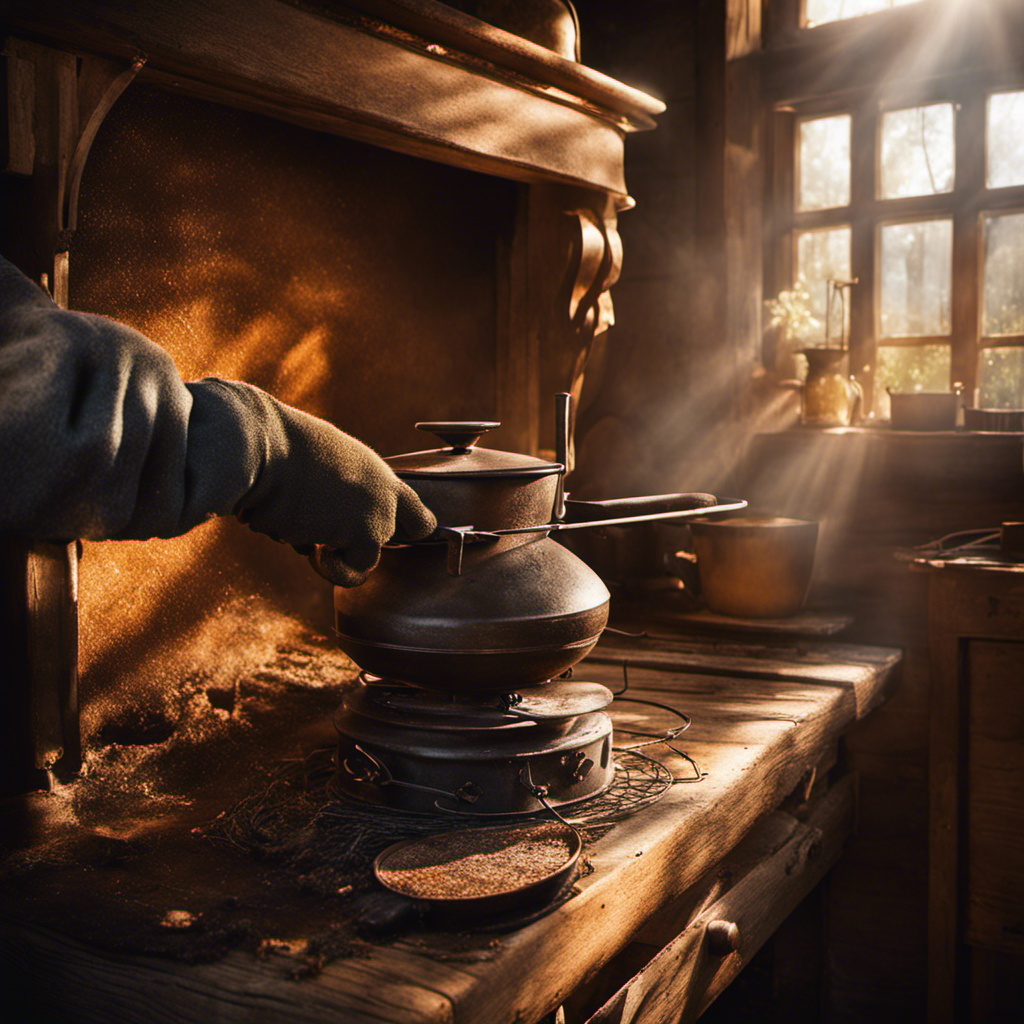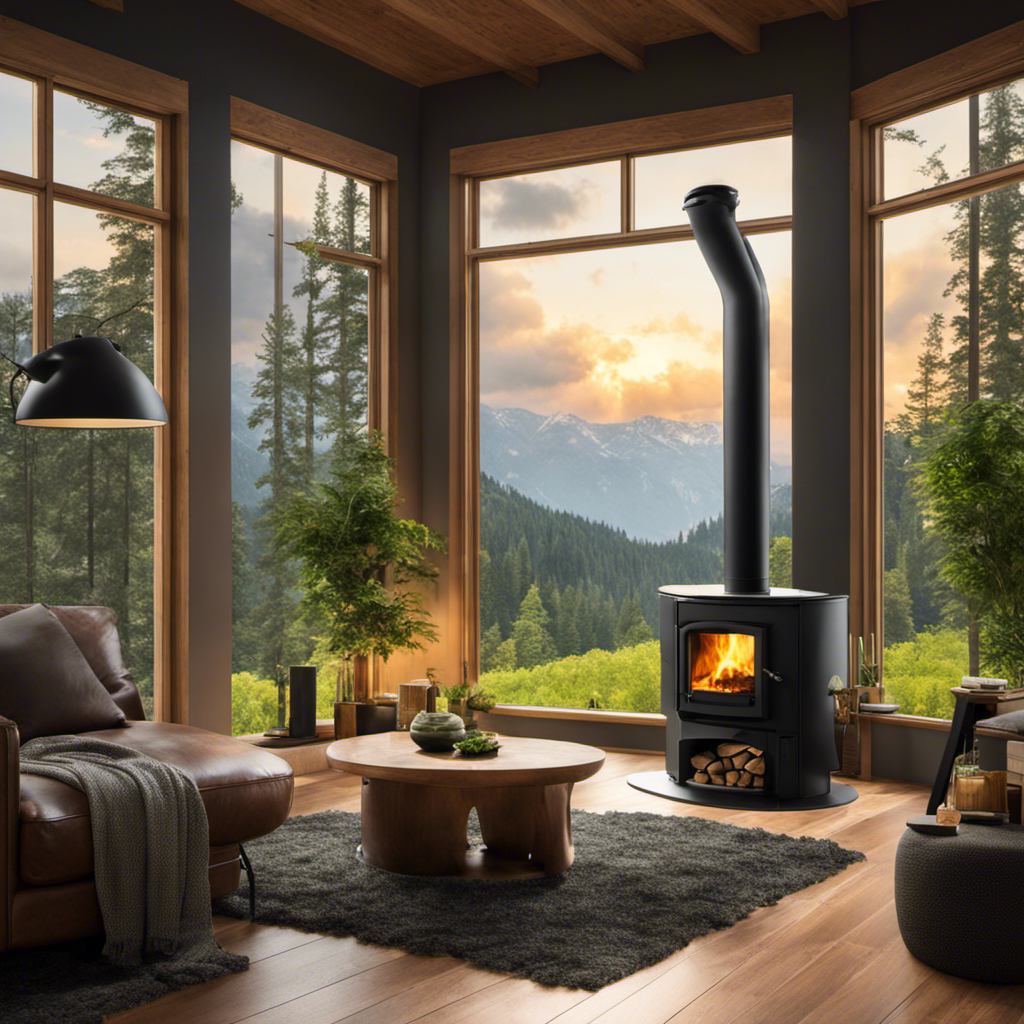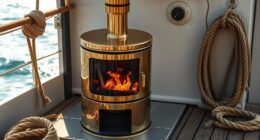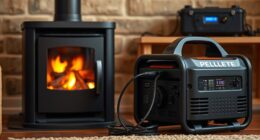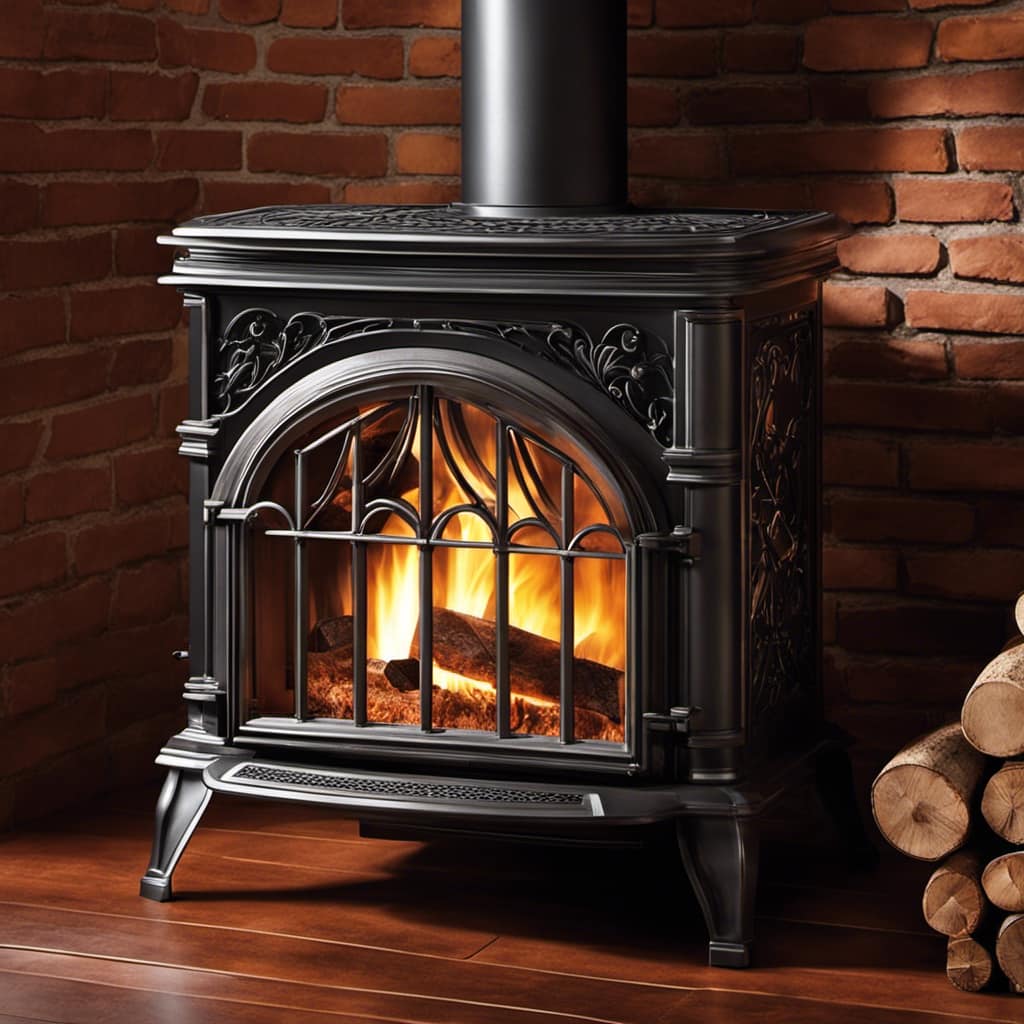
As a wood stove enthusiast, I came across a puzzling question: what goes on top of the wood stove pipe?
After thorough research and personal experience, I discovered the crucial role of a chimney cap. Not only does it prevent rain from entering the chimney, but it also acts as a spark arrestor, ensuring added safety.
Additionally, dampers play a significant role in regulating airflow.
Join me as we delve into the world of top pipe accessories to enhance wood stove performance.
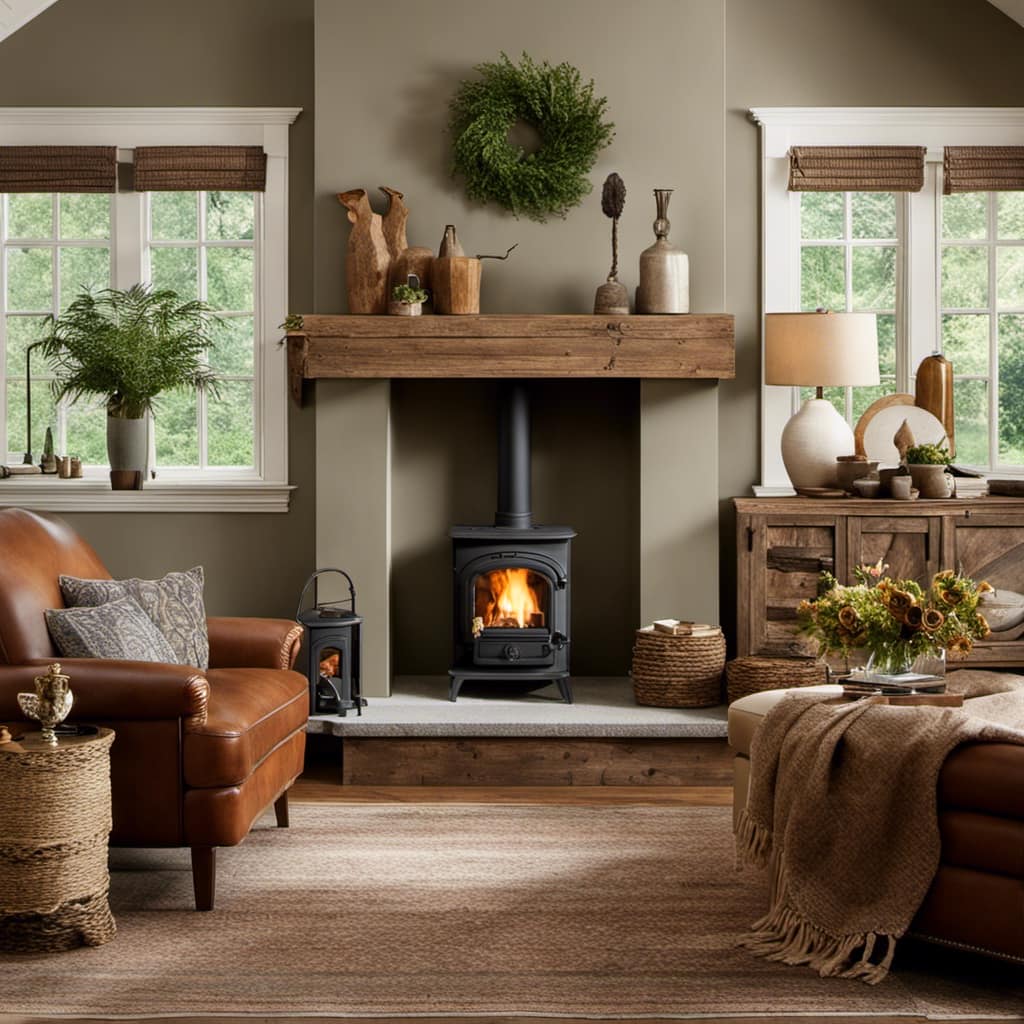
Key Takeaways
- Chimney caps, spark arrestors, dampers, and insulated pipes are all important accessories for the top of a wood stove pipe.
- Chimney caps prevent rain, snow, debris, and animals from entering the chimney, while also reducing the risk of chimney fires and water damage.
- Spark arrestors act as a safety measure by preventing sparks and embers from escaping the chimney and causing fires, and regular cleaning and inspection are necessary for optimal performance.
- Dampers control airflow and smoke production in a wood stove, with fully open dampers resulting in a hotter and more efficient burn, while closed dampers restrict airflow and reduce the burn rate.
The Importance of a Chimney Cap
I understand the importance of having a chimney cap to protect my home from debris and animals.
Chimney maintenance is crucial for the proper functioning of a fireplace or wood stove.
A chimney cap plays a vital role in preventing downdrafts, which can cause smoke to enter the house instead of being carried away. Downdrafts occur when the wind blows down the chimney, creating negative pressure and pushing air and smoke back into the home.
By installing a chimney cap, I can prevent this issue and ensure the safety and comfort of my living space.
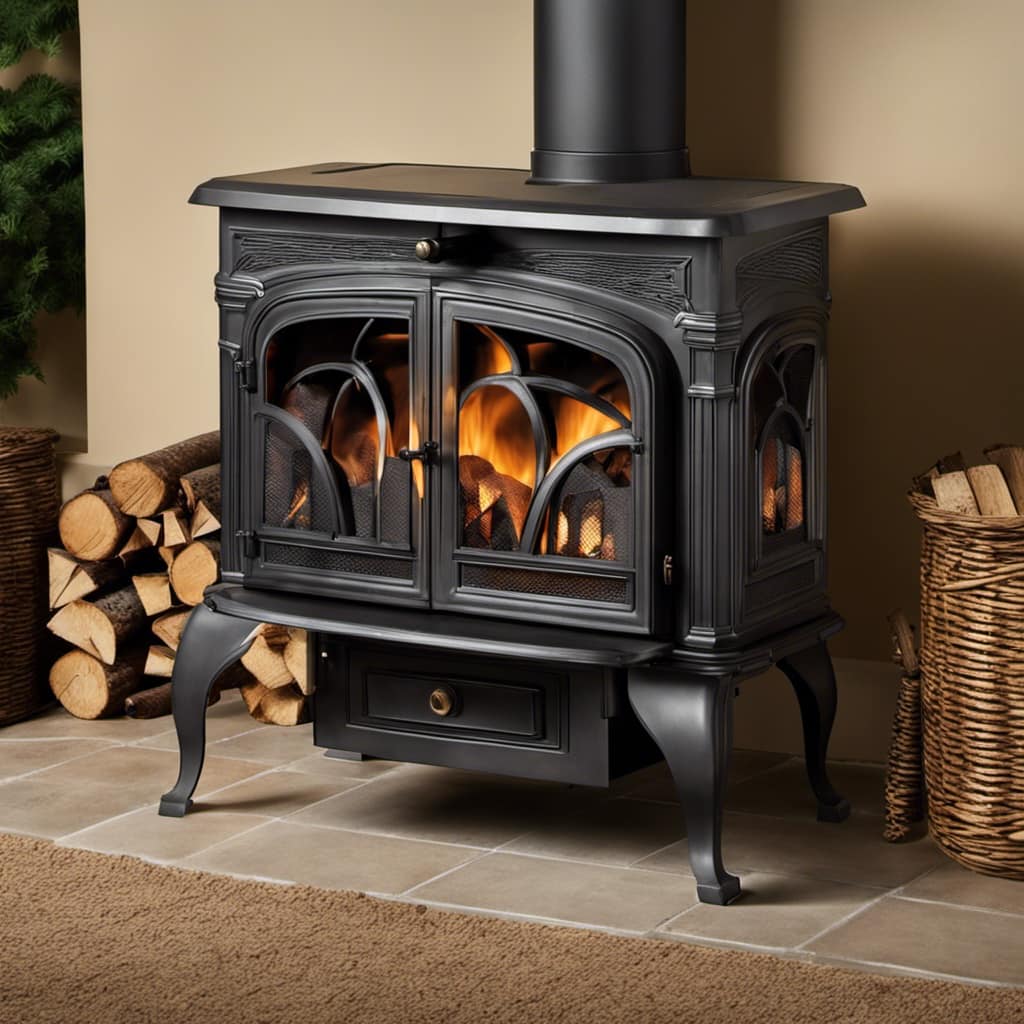
In addition to preventing downdrafts, a chimney cap also offers a range of benefits, such as protecting against rain and snow, preventing the entry of animals, and reducing the risk of chimney fires.
Benefits of Installing a Rain Cap
Installing a rain cap on your chimney can help protect against water damage and prevent leaks. The benefits of having a rain cap are numerous. Not only does it keep rainwater from entering your chimney, but it also prevents animals, debris, and leaves from clogging the flue. The installation process is relatively simple and can be done by a professional or a skilled DIYer.
To install a rain cap, you’ll need the following tools:
- Ladder
- Tape measure
- Chimney brush
- Chimney cap
- Silicone sealant
- Screwdriver
Here’s a step-by-step guide on how to install a rain cap:
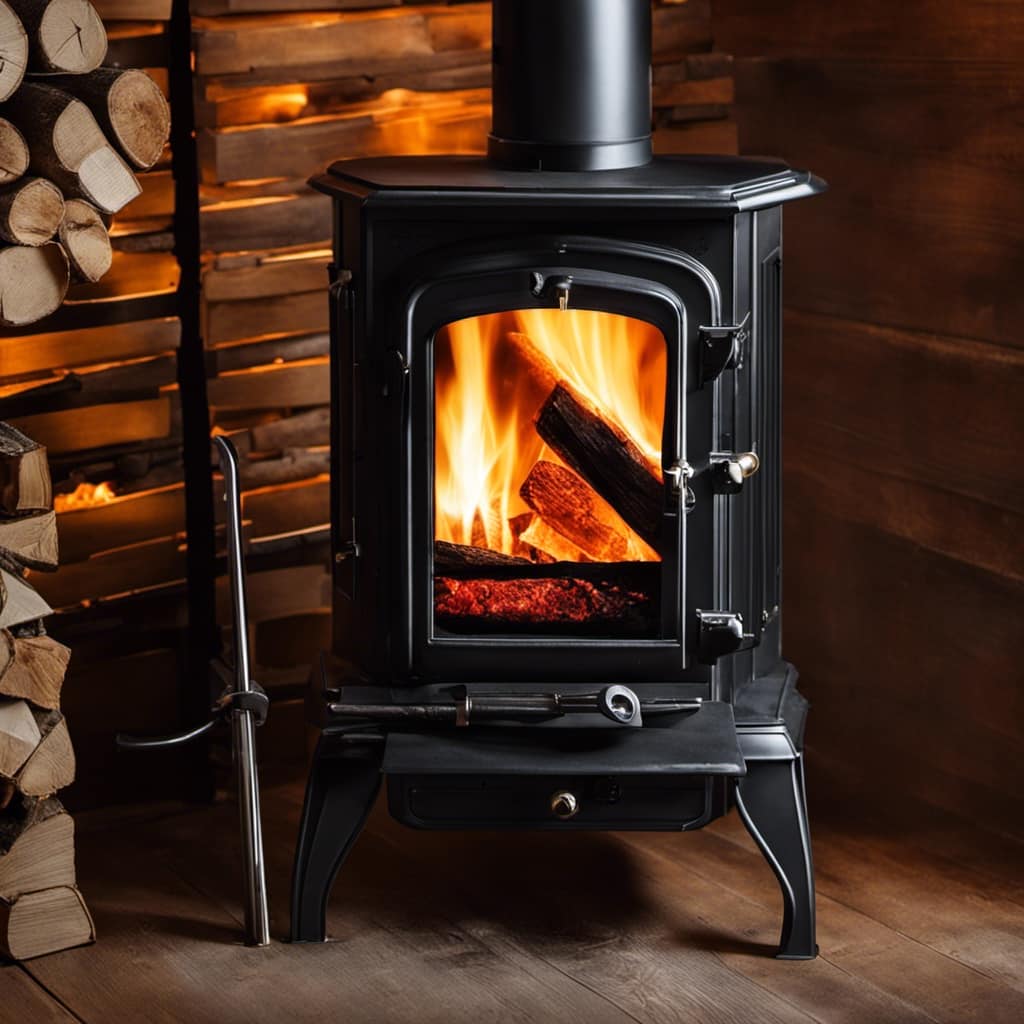
- Measure the diameter of your chimney pipe.
- Choose a rain cap that matches the size of your chimney pipe.
- Clean the chimney thoroughly using a chimney brush.
- Apply silicone sealant to the top of the chimney pipe.
- Place the rain cap over the chimney pipe and secure it with screws.
By installing a rain cap, you can ensure the longevity of your chimney and prevent costly water damage.
Now, let’s discuss the importance of spark arrestors for added safety.
Spark Arrestors for Added Safety
A spark arrestor is an essential safety feature that helps prevent sparks and embers from escaping the chimney and causing fires. It’s important to understand the importance of properly maintaining and installing a spark arrestor to ensure maximum safety and compliance with legal requirements.
Here are four key points to consider:
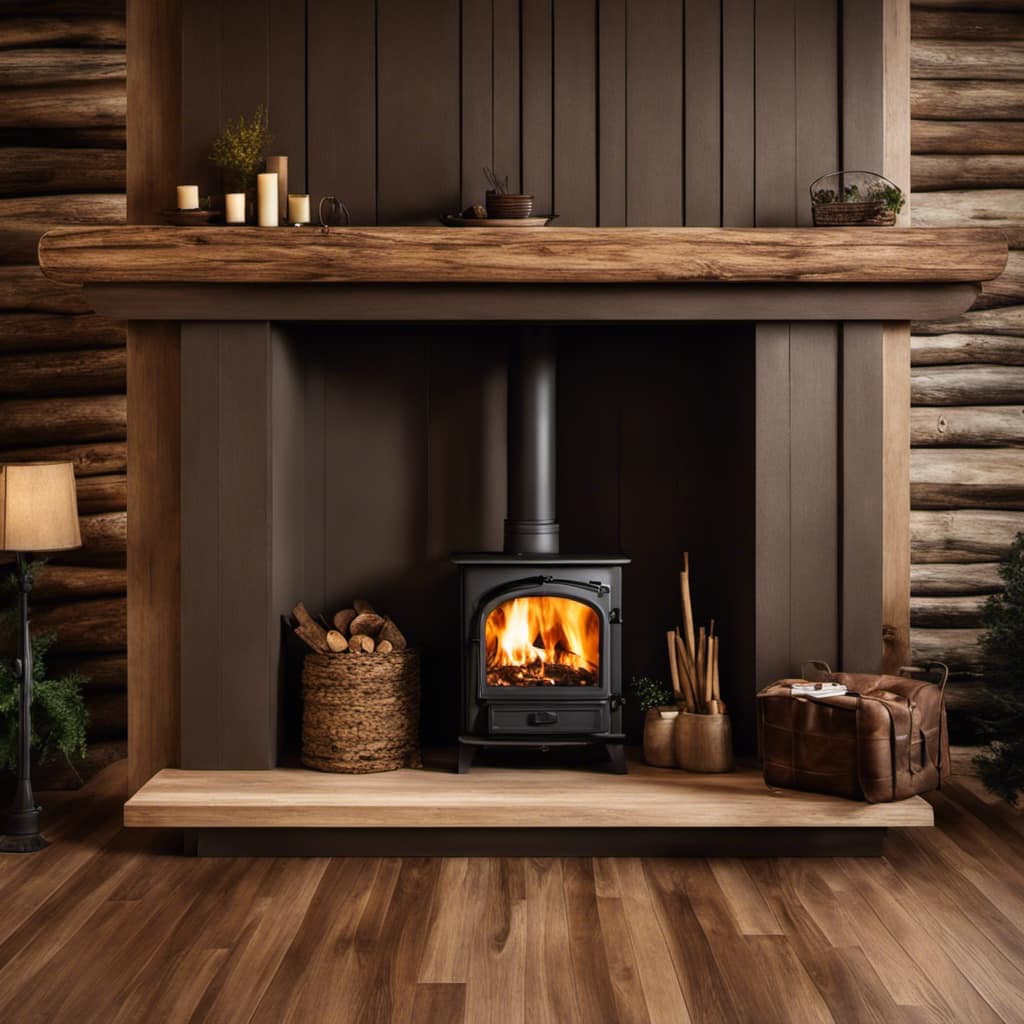
-
Regular cleaning: Cleaning the spark arrestor regularly is crucial to remove any buildup of soot or debris that could hinder its performance.
-
Inspection: Regularly inspect the spark arrestor for any signs of damage or wear, such as rust or loose fittings. Replace any damaged components promptly.
-
Correct installation: Ensure that the spark arrestor is installed correctly, following the manufacturer’s instructions and any local regulations or codes.
-
Compliance with legal requirements: Check your local building codes and regulations to ensure that you meet all legal requirements for spark arrestor installation and maintenance.
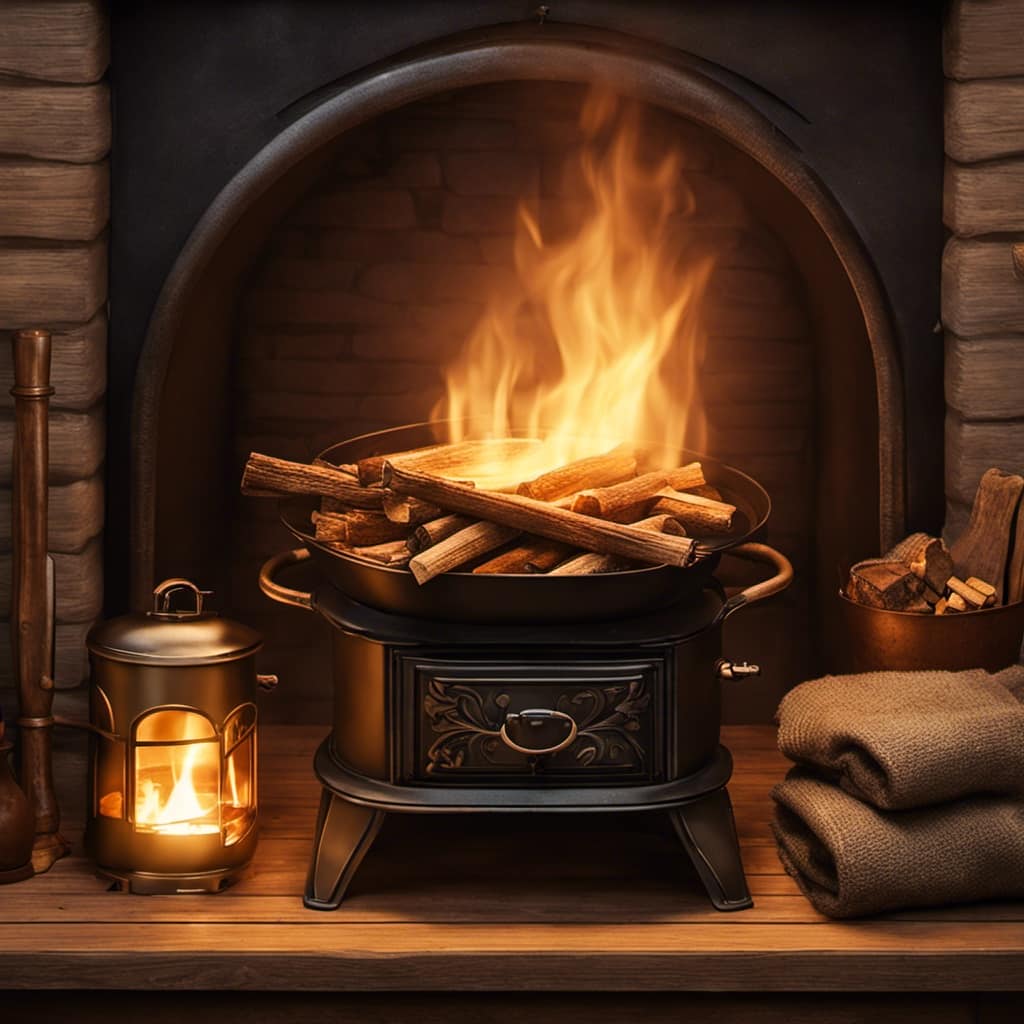
Understanding the Purpose of Dampers
What is the role of dampers in regulating airflow in a wood stove? Dampers play a crucial role in controlling airflow and reducing smoke in a wood stove. They are adjustable plates or valves located in the flue or stovepipe, allowing the user to regulate the amount of air entering or exiting the stove. By manipulating the dampers, one can control the combustion process and optimize the burn rate. When the dampers are fully open, more air is supplied to the fire, resulting in a hotter and more efficient burn. Conversely, closing the dampers restricts the airflow, reducing the burn rate and heat output. This control over the airflow also helps reduce smoke production, as a proper balance of air prevents incomplete combustion. A visual representation of this concept can be seen in the following table:
| Dampers Position | Airflow | Combustion | Smoke Production |
|---|---|---|---|
| Fully Open | High | Efficient | Minimal |
| Partially Open | Moderate | Balanced | Moderate |
| Closed | Low | Reduced | Potential |
Enhancing Wood Stove Performance With Top Pipe Accessories
I have found that using two top pipe accessories greatly enhances the performance of my wood stove. These accessories not only increase efficiency but also help in reducing smoke emission. Here are four essential accessories that I highly recommend for optimal wood stove performance:
-
Chimney Cap: A chimney cap is crucial as it prevents rain, snow, and debris from entering the chimney. It also helps to improve draft and reduce downdrafts, ultimately increasing efficiency.
-
Spark Arrestor: Installing a spark arrestor on top of the chimney can prevent hot embers and sparks from escaping, reducing the risk of a chimney fire. It also aids in reducing smoke emissions.

-
Damper: A damper placed at the top of the stovepipe allows for better control of airflow, resulting in increased efficiency and reduced smoke production.
-
Insulated Pipe: Using an insulated pipe at the top of the wood stove helps to retain heat and prevents excessive heat loss, leading to improved efficiency and reduced smoke emission.
Frequently Asked Questions
Can I Use a Regular Stove Pipe Instead of a Dedicated Wood Stove Pipe for My Wood-Burning Stove?
Yes, you can use a regular stove pipe for your wood-burning stove, but there are benefits to using a dedicated wood stove pipe. It is specifically designed to handle the high temperatures and creosote buildup of wood-burning stoves, ensuring safer and more efficient operation.
How Often Do I Need to Clean and Maintain the Wood Stove Pipe?
Cleaning frequency and maintenance tips for wood stove pipes vary based on usage and type of wood. Generally, it’s recommended to clean annually or every 1-3 months during heavy use. Regular inspections and proper ash disposal are also crucial for optimal performance.
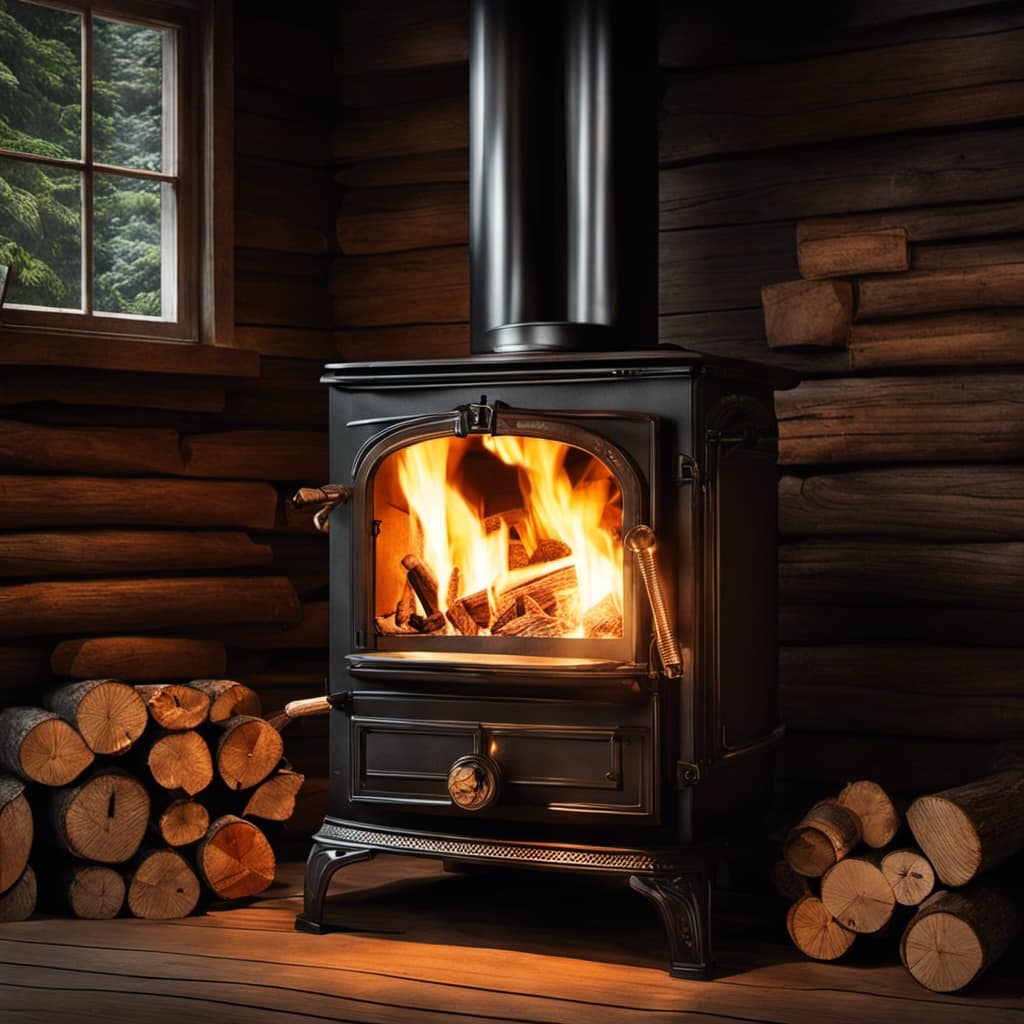
Is It Necessary to Use a Chimney Cap if My Wood Stove Is Installed Indoors?
Using a chimney cap for indoor wood stoves is beneficial. It prevents rain, debris, and animals from entering the pipe, reducing the risk of damage and blockage. Proper installation and maintenance are crucial for optimal performance.
Can I Install a Wood Stove Pipe Without a Damper?
Installing a wood stove pipe without a damper is possible, but not recommended. A damper offers control over the airflow, improving efficiency and preventing backdrafts. It’s like having a thermostat for your stove.
What Are the Recommended Materials for a Wood Stove Pipe?
When considering the installation process for a wood stove pipe, it is important to use recommended materials. Proper insulation, fireproof sealant, and a chimney cap are crucial components to ensure safety and efficiency.
Conclusion
In conclusion, the top of the wood stove pipe is a crucial part of the system that shouldn’t be overlooked. It’s like the crown that protects the chimney, ensuring its durability and efficiency.
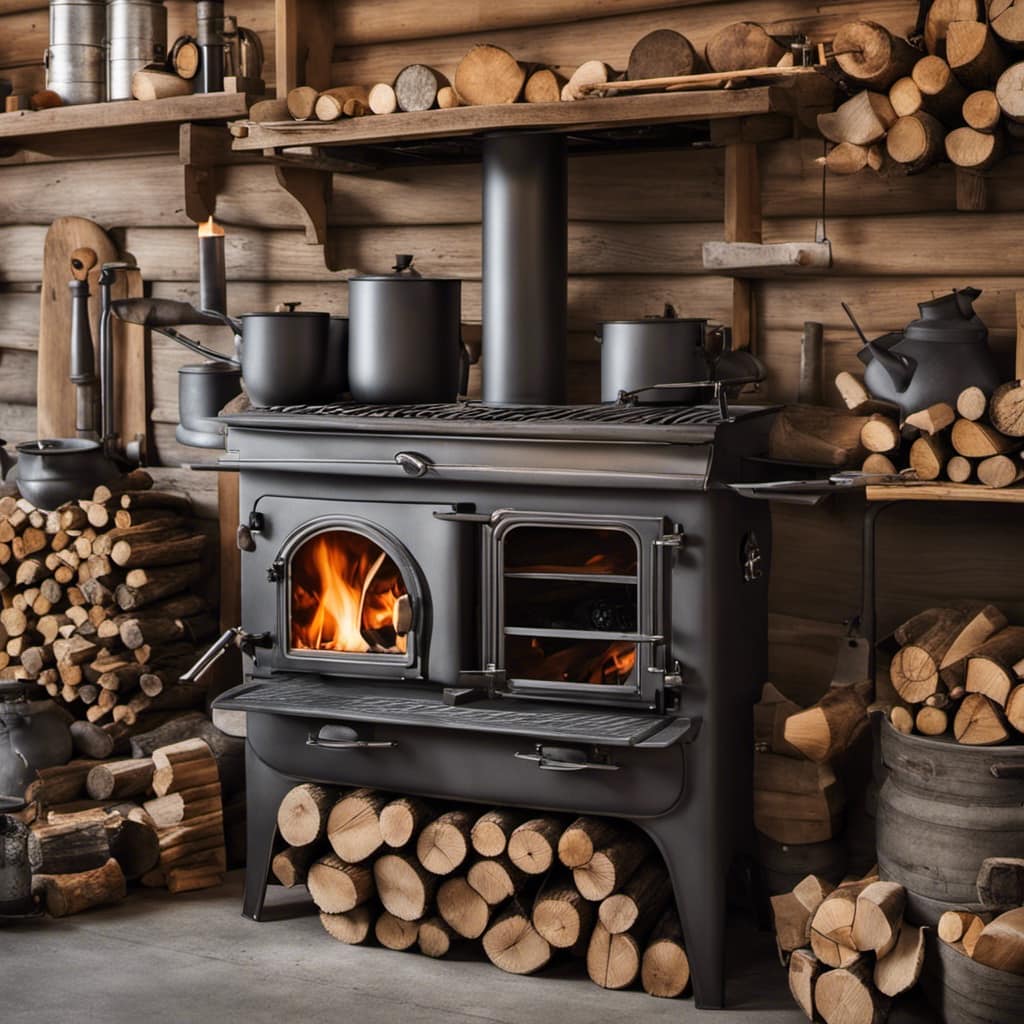
By installing a chimney cap, rain cap, spark arrestor, and dampers, you enhance safety, prevent water damage, and optimize the performance of your wood stove.
Treat your wood stove with the care it deserves, and it will provide warmth and comfort for years to come.
Growing up surrounded by the vast beauty of nature, Sierra was always drawn to the call of the wild. While others sought the comfort of the familiar, she ventured out, embracing the unpredictable and finding stories in the heartbeat of nature.
At the epicenter of every remarkable venture lies a dynamic team—a fusion of diverse talents, visions, and passions. The essence of Best Small Wood Stoves is crafted and refined by such a trio: Sierra, Logan, and Terra. Their collective expertise has transformed the platform into a leading authority on small wood stoves, radiating warmth and knowledge in equal measure.





